
Journal of Xenobiotics
Scope & Guideline
Innovating insights into xenobiotic interactions.
Introduction
Aims and Scopes
- Environmental Toxicology:
Research on the effects of pollutants, such as heavy metals and organic contaminants, on ecosystems and human health, emphasizing risk assessments and mitigation strategies. - Pharmacology and Toxicology:
Studies investigating the pharmacokinetics and toxicological profiles of various xenobiotics, including pharmaceuticals and agricultural chemicals, to understand their impacts on human health. - Bioremediation and Detoxification:
Exploration of biological methods to remediate contaminated environments, such as microbial detoxification of pollutants, plant-based remediation techniques, and the development of bioengineered nanoparticles. - Chemical Analysis and Detection Techniques:
Development and application of analytical methodologies, including mass spectrometry and chromatography, for the detection and quantification of xenobiotic compounds in different matrices. - Endocrine Disruption:
Examination of how certain xenobiotics act as endocrine disruptors and their implications for reproductive health and developmental processes in various organisms. - Nanotechnology Applications:
Investigation of the use of nanomaterials in drug delivery systems and their potential toxicological effects, as well as their environmental fate and interactions.
Trending and Emerging
- Microplastic Pollution:
An increasing number of studies are addressing the impacts of microplastics on ecosystems and human health, highlighting their ubiquitous presence and potential risks associated with ingestion and environmental accumulation. - Pharmaceuticals as Environmental Contaminants:
Research is increasingly focused on the presence of pharmaceuticals in the environment and their effects on aquatic organisms and ecosystems, driven by concerns about their bioaccumulation and ecological impacts. - Plant-Microbe Interactions for Bioremediation:
There is a growing interest in the role of plant-microbe interactions in bioremediation processes, emphasizing the use of natural systems to detoxify contaminated environments. - Nanotechnology in Xenobiotic Management:
Emerging studies are exploring the applications of nanotechnology in the detection, delivery, and remediation of xenobiotics, reflecting the innovative approaches being developed in the field. - Cumulative and Synergistic Effects of Pollutants:
Research is increasingly considering the cumulative and synergistic effects of multiple xenobiotics, reflecting a more holistic approach to understanding environmental and health impacts. - Endocrine Disruption Mechanisms:
There is a heightened focus on elucidating the mechanisms by which xenobiotics disrupt endocrine functions, underscoring the relevance of this research for public health and regulatory policies.
Declining or Waning
- Traditional Chemical Risk Assessment:
There has been a noticeable decline in studies solely focused on traditional chemical risk assessments, as newer methodologies and frameworks that incorporate more complex interactions and environmental dynamics are gaining traction. - Single Xenobiotic Studies:
Research focusing exclusively on the effects of single xenobiotics seems to be diminishing, with a growing emphasis on the cumulative effects of multiple pollutants and the interactions between them. - Historical Environmental Contaminants:
Topics centered around historical contaminants, such as legacy pesticides and industrial chemicals, appear to be receiving less attention, as current research trends favor emerging contaminants and their novel effects. - Animal Models in Toxicology Testing:
There is a decreasing focus on traditional animal models for toxicity testing, with a shift towards in vitro and computational methods that provide alternative approaches to assess xenobiotic impacts.
Similar Journals

CHEMICAL RESEARCH IN TOXICOLOGY
Illuminating the path to safer chemical practices.Chemical Research in Toxicology is a premier journal published by the American Chemical Society, dedicated to advancing the understanding of toxicological effects associated with chemical substances. Since its inception in 1988, this esteemed journal has maintained a robust impact factor, ranking in the Q1 quartile for both Medicine (miscellaneous) and Toxicology as of 2023, reflecting its significance and influence in the fields of pharmacology and toxicology. With an impressive Scopus ranking at #16 out of 133 in the Toxicology category, it serves as a vital resource for researchers, professionals, and students seeking cutting-edge insights and scholarly articles that bridge the gap between chemistry and toxicological science. Although not an open-access publication, it continues to provide comprehensive analyses and original research that inform safe chemical practices and regulatory policies, further enhancing its role in public health and safety.
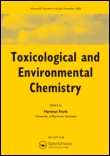
TOXICOLOGICAL AND ENVIRONMENTAL CHEMISTRY
Innovating solutions for a sustainable and healthy future.TOXICOLOGICAL AND ENVIRONMENTAL CHEMISTRY is a pivotal journal published by Taylor & Francis Ltd, addressing critical intersections between environmental chemistry and toxicology since its inception in 1979. With its ISSN 0277-2248 and E-ISSN 1029-0486, the journal serves as a platform for rigorous research and innovative methodologies in pollution control, health implications of environmental chemicals, and the broader spectrum of toxicological studies. Although it currently does not offer open access, the journal's impact in the field is underscored by its Category Quartiles rankings in 2023, placing it in Q3 across Environmental Chemistry, Health, Toxicology and Mutagenesis, and Pollution categories. Furthermore, its Scopus rankings reveal its significant role within the scientific community, specifically in areas such as Environmental Science and Toxicology. The journal aspires to foster multidisciplinary dialogue and advance knowledge that contributes to environmental sustainability and public health, making it an essential resource for researchers, professionals, and students dedicated to these fields.
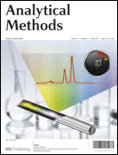
Analytical Methods
Innovating Methodologies for a Brighter TomorrowAnalytical Methods, published by the renowned Royal Society of Chemistry, is a distinguished journal that has been serving the scientific community since its inception in 2009. Specializing in the fields of Analytical Chemistry, Chemical Engineering, and General Engineering, this journal holds a reputable position with an impressive Q2 ranking in three relevant categories as of 2023. With its focus on innovative methodologies and advanced applications in analytical science, it aims to disseminate cutting-edge research and foster dialogue among researchers, professionals, and students. Although it is not an open access publication, it is accessible worldwide and provides critical insights into the latest developments in analytical techniques and their engineering applications. The journal also ranks highly in pertinent Scopus categories, such as being in the 77th percentile for General Engineering and 61st percentile for Analytical Chemistry, underlining its significance in advancing knowledge and practical applications in these fields. By participating in this journal, readers can expect to engage with high-quality research that influences the future of analytical practices and chemical engineering.
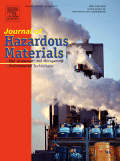
JOURNAL OF HAZARDOUS MATERIALS
Championing Excellence in Hazardous Materials StudiesJOURNAL OF HAZARDOUS MATERIALS, published by Elsevier, stands as a leading academic platform in the fields of Environmental Chemistry, Environmental Engineering, and Pollution Studies. With a solid impact captured through its Q1 ranking across multiple relevant categories, this journal is essential for researchers focusing on the management and mitigation of hazardous materials. Originating in 1975 and continuing to present insight until 2024, it provides valuable peer-reviewed content that informs best practices within health, toxicology, mutagenesis, and waste management. Furthermore, its impressive Scopus rankings highlight its influence, securing a position in the top percentile among global publications. While access to the journal is not open access, its rigorous approach to impactful research makes it indispensable for academics, industry professionals, and students seeking to deepen their understanding and innovate in this critical area of study.

Mycotoxin Research
Advancing Knowledge for a Safer FutureMycotoxin Research, published by Springer Heidelberg, is a vital interdisciplinary journal dedicated to the exploration and study of mycotoxins, their impacts on health and environment, as well as strategies for mitigation. With a solid presence in the fields of Biotechnology, Microbiology, and Toxicology, it has earned a respectable Q3 ranking and continues to facilitate the dissemination of impactful research from 1985 through to 2024. The journal caters to a diverse audience, including researchers, professionals, and students, providing a platform for original research articles, reviews, and case studies that contribute to the understanding and management of mycotoxins. Although it does not offer open-access options, the journal remains a critical resource, engaging its readers with cutting-edge findings and advancements that shape the future of health and safety regarding mycotoxin exposure. With Scopus rankings reflecting its relevance—44th in Toxicology, 113th in Biotechnology, and 71st in Microbiology—Mycotoxin Research stands as an essential publication for anyone dedicated to advancing knowledge in these critical scientific domains.

JOURNAL OF ENVIRONMENTAL BIOLOGY
Unveiling Insights in Environmental BiologyJOURNAL OF ENVIRONMENTAL BIOLOGY, a prominent publication in the field of environmental science, is published by Triveni Enterprises in India. Since its inception in 1988, this journal has served as a vital platform for disseminating research related to environmental biology, encompassing areas such as environmental engineering, health impacts of toxic substances, and the mechanisms of mutagenesis. With an increasing impact in the scientific community, the journal is categorized in the third quartile (Q3) in Environmental Engineering and fourth quartiles (Q4) in Health, Toxicology, and Mutagenesis according to 2023 rankings. Researchers, professionals, and students will find value in its robust collection of original research articles, review papers, and case studies that address pressing environmental issues and promote sustainable practices. Although it is not an open-access journal, the comprehensive scope of the content published from 1988 to 2024 ensures that critical insights remain accessible to those dedicated to advancing the knowledge in environmental sciences.
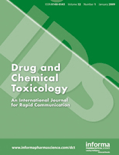
DRUG AND CHEMICAL TOXICOLOGY
Bridging disciplines for safer environments.Drug and Chemical Toxicology is a well-respected journal in the fields of toxicology, pharmacology, and public health, published by Taylor & Francis Ltd. Since its inception in 1978, this journal has diligently explored the effects and mechanisms of chemical exposures on health and the environment, fulfilling a crucial role in advancing scientific understanding and safeguarding public health. The journal is indexed across prestigious databases and features an impressive array of articles categorized within the Q2 and Q3 quartiles across various categories in 2023, reflecting its significance in Chemical Health and Safety as well as Environmental and Occupational Health disciplines. With an extensive reach and a focus on interdisciplinary research, Drug and Chemical Toxicology offers a rich repository of original research, reviews, and methodological advancements, catering to a diverse audience of researchers, professionals, and students dedicated to the betterment of safety and health standards. Although not an open-access publication, its articles are widely accessible to the academic community, ensuring that critical innovations and insights are shared for the greater good.

Food Additives and Contaminants Part A-Chemistry Analysis Control Exposure & Risk Assessment
Transforming knowledge into safer food practices.Food Additives and Contaminants Part A-Chemistry Analysis Control Exposure & Risk Assessment, published by Taylor & Francis Ltd, is a leading journal in the field of food science, toxicology, and public health. With an ISSN of 1944-0049 and an E-ISSN of 1944-0057, this esteemed publication has established itself as a vital resource for researchers and professionals involved in the analysis and regulation of food additives and contaminants. Since its inception and through its converged years from 2008 to 2012 and again from 2014 to 2023, the journal has maintained an impactful presence, notably achieving a Q2 ranking in diverse categories including Chemistry (miscellaneous) and Food Science, alongside commendable standings in Health and Environmental Health. The journal’s mission is to foster high-quality research by providing a platform for critical studies related to chemical analysis, exposure assessments, and risk management in food safety. By prioritizing engaging, peer-reviewed content, it aims to enhance understanding and mitigate risks associated with food additives, making it an indispensable tool for academics, practitioners, and policymakers alike.

Toxics
Transforming toxicology insights into public health solutions.Toxics is a leading international journal published by MDPI that has been dedicated to advancing the knowledge in the fields of toxicology, environmental health, and chemical safety since its inception in 2013. With an impressive Open Access model, it ensures that all research findings are readily available to a global audience, fostering collaboration and innovation across academia and industry. The journal is esteemed for its rigorous peer-review process and holds notable rankings, including Q1 status in Chemical Health and Safety and Q2 in both Health, Toxicology and Mutagenesis and Toxicology, reflecting its impact on critical research areas. Based in Basel, Switzerland, Toxics provides a platform for researchers, professionals, and students to disseminate significant findings on the implications of toxic substances in health and the environment, aiming to improve public health outcomes and inform regulatory decisions. With its ongoing commitment to high-quality research and relevant access options, Toxics continues to be an essential resource in the domain of toxicology and environmental sciences.
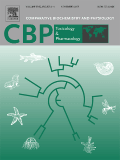
COMPARATIVE BIOCHEMISTRY AND PHYSIOLOGY C-TOXICOLOGY & PHARMACOLOGY
Bridging Laboratory Discoveries with Real-World ApplicationsComparative Biochemistry and Physiology C-Toxicology & Pharmacology, published by Elsevier Science Inc, stands as a prominent resource in the fields of pharmacology, toxicology, and biochemical research. With its ISSN 1532-0456 and E-ISSN 1878-1659, this journal has carved out a significant niche, focusing on the comparative aspects of biochemical and physiological data across various species. Recognized for its impact in diverse fields, it boasts a Q1 ranking in Animal Science and Zoology, Aquatic Science, Health, Toxicology and Mutagenesis, alongside respectable standings in other related disciplines. Researchers and professionals can leverage this publication to access high-quality, peer-reviewed studies that advance the understanding of biochemical processes and their toxicological implications. The journal aims to bridge the gap between laboratory findings and real-world applications, fostering an environment for interdisciplinary collaboration. For academics seeking to enhance their knowledge or contribute to this impactful field, Comparative Biochemistry and Physiology C-Toxicology & Pharmacology serves as an invaluable platform.